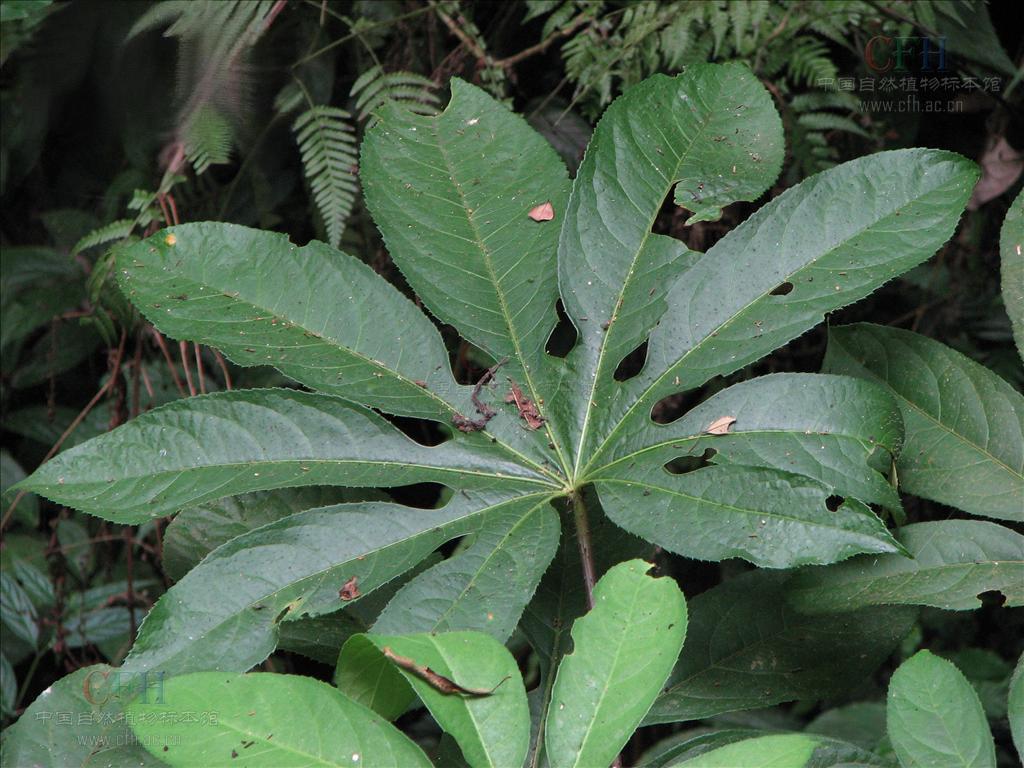Brassaiopsis mitis seed
Brassaiopsis mitis is a lesser-known yet botanically intriguing species in the Araliaceae family, which includes more well-known genera such as Panax (ginseng) and Schefflera. Native to the tropical and subtropical forests of Southeast Asia and southern china, Brassaiopsis mitis is a woody shrub or small tree recognized for its palmate leaves and ecological adaptability. In recent years, it has attracted attention for its potential medicinal properties and use in traditional medicine.
Botanical Description
- Family: Araliaceae
- Growth Form: A small tree or large shrub, typically reaching 2 to 6 meters in height.
- Leaves: Large, deeply lobed and palmate (hand-shaped), often with 7–11 segments, giving it an exotic and ornamental appearance.
- Flowers: Small, greenish-white, borne in terminal umbels or panicles.
- Fruits: Small and dark-colored when mature, sometimes used in folk medicine.
Traditional and Medicinal Uses
Though scientific literature on Brassaiopsis mitis is limited compared to more studied medicinal plants, various ethnobotanical sources suggest the following traditional uses:
- Herbal Remedy in Traditional Medicine
- Used in local herbal systems in Southeast Asia and parts of southern China as a general tonic, believed to promote internal balance and resilience.
- Occasionally used as a supportive herb for liver health, detoxification, or pain relief.
- Anti-inflammatory and Analgesic Potential
- Related species in the Brassaiopsis genus have demonstrated anti-inflammatory and analgesic activities in pharmacological studies.
- Brassaiopsis mitis is believed to contain similar bioactive compounds (such as polyacetylenes, triterpenoids, and flavonoids) that may offer natural pain relief or anti-swelling effects.
- Research Potential
- Some preliminary research on related Brassaiopsis species shows potential antiviral, antimicrobial, and even anticancer activities, making B. mitis a subject of interest for further phytochemical and pharmacological investigation.
Ornamental and Environmental Uses
- Tropical Garden Landscaping
- The plant’s distinctive leaf shape and upright form make it an attractive choice for botanic gardens, tropical landscape designs, and shade gardens.
- It is sometimes used in reforestation or forest-edge planting projects in its native regions, due to its adaptability to semi-shaded, moist environments.
- Wildlife Habitat
- The tree provides cover and food sources (flowers, fruits) for various insects and small animals in its native forest ecosystems.
Cultivation and Growth Conditions
- Climate: Thrives in warm, humid environments, typically in USDA zones 10–11.
- Soil: Prefers rich, loamy, and well-drained soil.
- Light: Grows best in partial shade but can adapt to filtered sunlight.
- Propagation: Generally propagated by seeds or semi-hardwood cuttings.
Caution and Toxicity
- There is limited safety data on Brassaiopsis mitis in modern scientific literature. While no significant toxicity is reported from traditional use, internal use should be approached with caution unless further research confirms its safety profile.
- As with many medicinal plants, professional supervision is recommended before any therapeutic use.
Conclusion
Brassaiopsis mitis is a botanically attractive and culturally significant plant with promising medicinal potential. While not yet widely known in modern herbalism or global trade, it represents an emerging subject of interest for natural medicine research, ethnobotany, and tropical horticulture. Its rich phytochemical profile and traditional applications suggest a bright future—especially if sustainable cultivation and deeper scientific study continue to evolve.
Brassaiopsis mitis: Uses, Medicinal Potential, and Botanical Importance

